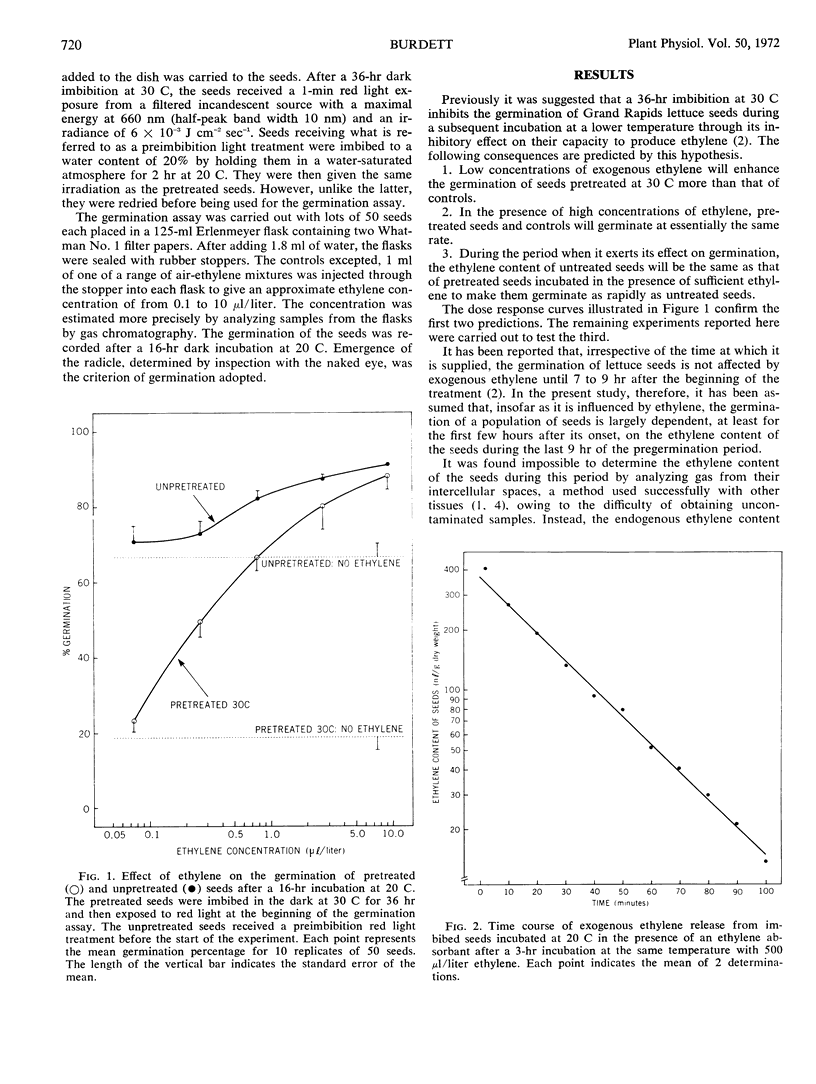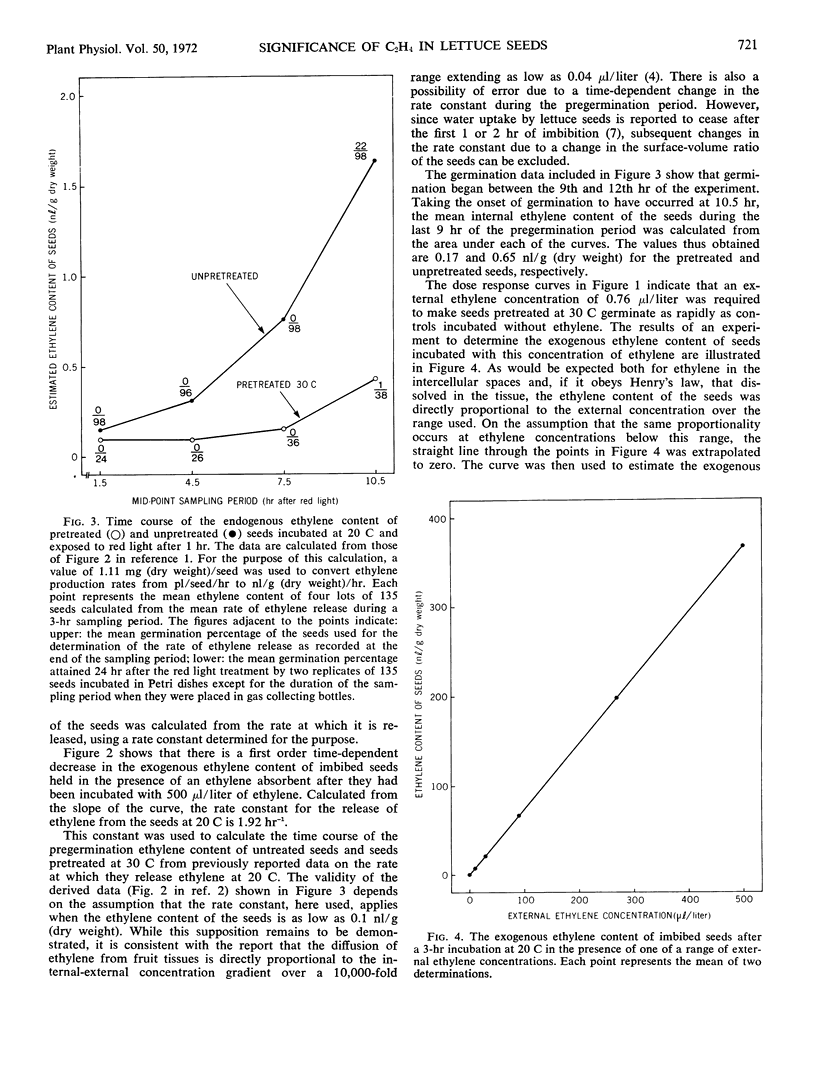Abstract
The germination and pregermination ethylene production of Grand Rapids lettuce seeds (Lactuca sativa L.) incubated at 20 C after a red light treatment are inhibited if the seeds are first imbibed at 30 C for 36 hours. In this study, low concentrations of ethylene were found to enhance the germination of seeds pretreated at 30 C more than that of untreated controls. In the presence of high concentrations of ethylene, pretreated seeds and controls germinated at a similar rate. These results are consistent with the view that a prolonged imbibition at 30 C inhibits germination at a lower temperature through its effect on the ethylene production of the seeds. As a further test of the hypothesis, estimates were made of the pregermination ethylene content of untreated seeds and pretreated seeds incubated in the presence of sufficient ethylene to make them germinate as rapidly as untreated seeds. The values obtained were 0.65 and 0.74 nanoliter of ethylene per gram (dry weight) of seeds, respectively.
Full text
PDF



Selected References
These references are in PubMed. This may not be the complete list of references from this article.
- Beyer E. M., Morgan P. W. A method for determining the concentration of ethylene in the gas phase of vegetative plant tissues. Plant Physiol. 1970 Aug;46(2):352–354. doi: 10.1104/pp.46.2.352. [DOI] [PMC free article] [PubMed] [Google Scholar]
- Burdett A. N. Antagonistic effects of high and low temperature pretreatments on the germination and pregermination ethylene synthesis of lettuce seeds. Plant Physiol. 1972 Aug;50(2):201–204. doi: 10.1104/pp.50.2.201. [DOI] [PMC free article] [PubMed] [Google Scholar]
- Burdett A. N., Vidaver W. E. Synergistic action of ethylene with gibberellin or red light in germinating lettuce seeds. Plant Physiol. 1971 Nov;48(5):656–657. doi: 10.1104/pp.48.5.656. [DOI] [PMC free article] [PubMed] [Google Scholar]
- Burg S. P., Burg E. A. Role of Ethylene in Fruit Ripening. Plant Physiol. 1962 Mar;37(2):179–189. doi: 10.1104/pp.37.2.179. [DOI] [PMC free article] [PubMed] [Google Scholar]
- Burg S. P., Dijkman M. J. Ethylene and auxin participation in pollen induced fading of vanda orchid blossoms. Plant Physiol. 1967 Nov;42(11):1648–1650. doi: 10.1104/pp.42.11.1648. [DOI] [PMC free article] [PubMed] [Google Scholar]
- Esashi Y., Leopold A. C. Dormancy regulation in subterranean clover seeds by ethylene. Plant Physiol. 1969 Oct;44(10):1470–1472. doi: 10.1104/pp.44.10.1470. [DOI] [PMC free article] [PubMed] [Google Scholar]
- Ikuma H., Thimann K. V. Analysis of Germination Processes of Lettuce Seed by Means of Temperature and Anaerobiosis. Plant Physiol. 1964 Sep;39(5):756–767. doi: 10.1104/pp.39.5.756. [DOI] [PMC free article] [PubMed] [Google Scholar]
- Ketring D. L., Morgan P. W. Ethylene as a Component of the Emanations From Germinating Peanut Seeds and Its Effect on Dormant Virginia-type Seeds. Plant Physiol. 1969 Mar;44(3):326–330. doi: 10.1104/pp.44.3.326. [DOI] [PMC free article] [PubMed] [Google Scholar]
- Takayanagi K., Harrington J. F. Enhancement of germination rate of aged seeds by ethylene. Plant Physiol. 1971 Apr;47(4):521–524. doi: 10.1104/pp.47.4.521. [DOI] [PMC free article] [PubMed] [Google Scholar]


